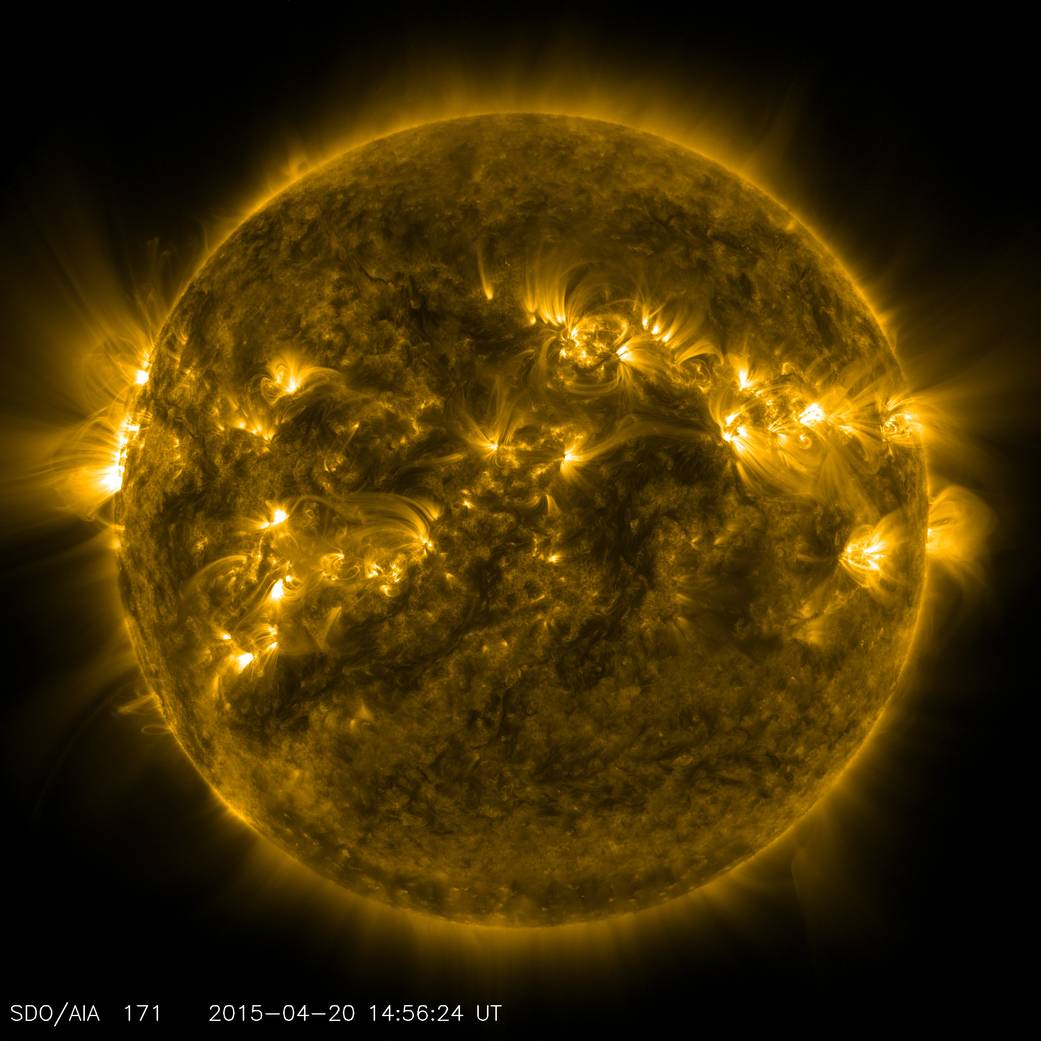Sun Facts
Star Profile
| Type | Star |
| Age | 4.603 billion years |
| Diameter | 864,337.3 miles |
| Mass | 1.989 × 1030 kg |
| Volume | 1.41×1018 km3 |
| Rotation speed | 1.241 miles/s |
| Circumference | 2.72 million miles |
| Hottest Temp | 27 Million F at the core |
Below are some of the facts about planet Earth:
- The sun is the center of the solar system. It is a star which, dispite its size, is categorized as a yellow dwarf.
- The sun is a sphere made most of two gases: Hydrogen (~73%), Helium (~25%). The rest are small quantities of heavier elements, including oxygen, carbon, neon, and iron.
- Temperature at the surface of the sun is around 5500 degree Celsius. That's 4.6 times hotter than the hottest lava on earth.
- The sun occupies 99.8% of the total mass of the solar system. Compared to earth the mass of the sun is 330,000 times the earth’s mass.
- Diameter of the sun is approximately 1.4 million kilometers where the Earth’s diameter would fit in almost 110 times.
- Inside a hollow sun almost 1,300,000 earths would fit in terms of volume.
- The sun’s energy and temperature is made possible by a process called nuclear fusion, where two Hydrogen atoms fuse together to form one Helium atom. This process releases a lot of of energy.
- The sun will gradually increase in size. As it will consume all of its hydrogen atoms in making helium, it will grow in size and engulf the Mercury, then Venus, and then the Earth one day, though that’s a long way to happen. By that time the sun will change to a red dwarf star.
- Solar winds consisting of highly charged particles Plasma are generated by the sun, which travels from the surface or corona of the sun to everywhere in the solar system at the speed of 450 km/sec.
- The plasma from solar winds reacts with the Earth’s atmosphere to bring on special lighting effects at the earth’s sky near the poles, known as Aurora Borealis and Aurora Australis.
- The sun along with its solar system is also in a motion along an orbit around the Milky Way galactic center. The sun revolves around this orbit at a speed ranging from 225 to 250 million years per revolution. Its distance from the center of the galaxy ranges between 24 and 26 thousand light years.
- The future of the sun is a white dwarf star, when one day the sun will complete all of its reactions and the red dwarf intermediate phase too. As a white dwarf it will be the size of the earth while still having its huge mass in that volume.
- Light energy from the sun’s core to the sun’s surface takes millions of years to get transmitted, and light from the sun’s surface to the earth takes 8 minutes and 20 seconds to travel.
- The sun is already middle aged, and has burned half of its hydrogen.
- The rotation of the sun is in the opposite direction of the earth’s rotation. The sun rotates from west to east.
- Solar storms often occur emitting huge solar flares, and they are seen from the earth as dark sunspots on the surface of the sun. These are caused due to the variations of the magnetic field of the sun. The sun by the way has a very strong magnetic field to cause these solar storms.
- The temperature at the core of the sun can sore to as high as 15 millions degrees Celsius.
- Due to constant nuclear fusion reaction happening inside the sun, the sun would have exploded and expanded as happens in a bomb explosion. But it still is in a shape and size due to its strong magnetic core.
